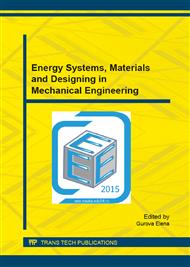p.536
p.542
p.546
p.553
p.559
p.568
p.572
p.578
p.582
Energy-Saving Potential from Use of Heat-Reflective Screens with Solar Battery in Windows for Power Supply Systems of Buildings in Different Regions of Russia and France
Abstract:
The new energy saving windows with heat-reflecting shields are well known, but for their practical use they need to be integrated into the automated system for controlling heat supply in buildings and the efficiency of their use tоgether with the existing energy-saving measures must be determined. The study was based on the results of field tests of windows with heat-reflective shields in a certified climate chamber. The method to determine the minimum indoor air temperature under standby heating using heat-reflective shields in the windows and multifunctional energy-efficient shutter with solar battery have been developed. Annual energy saving for the conditions of different regions of Russia and France was determined. Using windows with heat-reflecting screens and a solar battery results in a triple power effect: reduced heat losses during the heating season due to increased window resistance; lower cost of heating buildings due to lowering of indoor ambient temperature; also electric power generation.
Info:
Periodical:
Pages:
559-567
Citation:
Online since:
September 2015
Authors:
Price:
Сopyright:
© 2015 Trans Tech Publications Ltd. All Rights Reserved
Share:
Citation:


